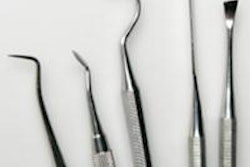Oklahoma health officials say more than 60 patients have tested positive for hepatitis and HIV since their investigation began last month into a Tulsa oral surgeon's practice.
But it is unclear whether the patients contracted the diseases from the Owasso or Tulsa practices of W. Scott Harrington, DMD, according to a story by KTUL TV Channel 8. Public health officials have been advising current and former patients of Dr. Harrington that they may have been exposed to blood-borne viruses at his practices.
The ongoing investigation has so far identified 57 patients who tested positive for hepatitis C and three for hepatitis B, the story noted. Positive results have been reported for HIV, but Oklahoma State Department of Health data security policy regarding HIV disclosure prohibits public reporting of numbers fewer than 3, the Tulsa Health Department stated in a press release.
Health officials are now notifying people who participated in the screening of their test results. Those who tested positive are being personally contacted and counseled about information specific to the disease for which the test was positive, and they will be directed to resources for appropriate care and follow-up, the health department noted. If warranted, testing will be recommended for a spouse or partner.
The state dental board launched an investigation of Dr. Harrington on March 15 after being notified that Tulsa health officials were looking into a complaint about potential hepatitis C contamination at his practice. The group has asked prosecutors to file criminal charges against Dr. Harrington, who was cited as a health "menace" after investigators found rusty instruments and lax sterilization procedures in his office.
One of Dr. Harrington's patients, Christina Quin, has filed the first lawsuit related to the case. Quin had four third molars extracted by Dr. Harrington in 2009 and was illegally given IV sedation by a dental assistant during the procedure. She was subsequently diagnosed with an infection and liver problems after developing a rash and a high fever following the extractions.



















